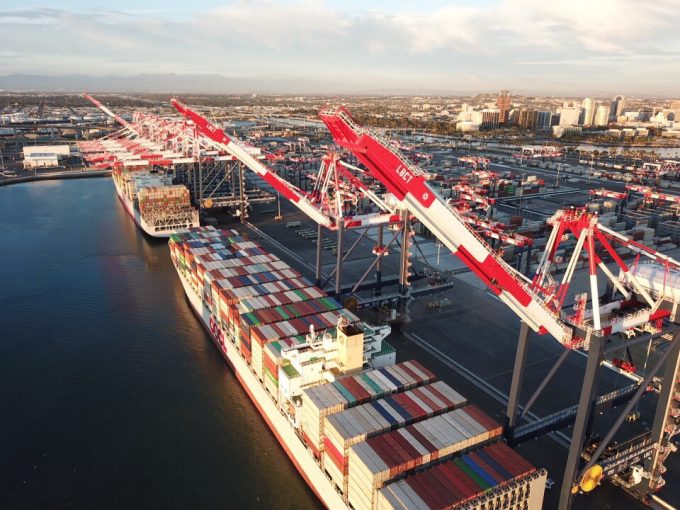Forwarders trust us to be independent, says CMA CGM Air chief Mazaudier
“Forwarders trust us,” insisted Damien Mazaudier, CEO of CMA CGM Air Cargo. “The market is ...

The US west coast ports of Los Angeles and Long Beach reported strong import container throughput in October, as some holiday season cargo owners shied away from routing via the east coast gateways.
Los Angeles processed 372,455 teu, an increase of 10.7% on the year before, while neighbouring Long Beach saw imports jump 23.6%, to 363,300 teu.
“And November is also shaping up to be a strong month as we see a final holiday push and warehouse replenishment,” said Port of Los Angeles executive director Gene Seroka.
Mario Cordero, Port of Long Beach CEO, said import volumes were “rebounding” in response to “efforts to recapture market share”, and he added: “We are anticipating moderate growth through the rest of the year, as retailers continue to stock shelves for the winter holidays.”
Meanwhile, John McCown’s October analysis of performance by the ten largest US container ports saw a cumulative year-on-year 2.4% increase in import volumes, to 1,944,637 teu – following 15 consecutive months of decreases.
Interestingly, import volumes in October were 8.8% higher than in the same month in 2019, before the impact of the pandemic.
“We are now finally back to year-over-year changes being more fundamentally driven by underlying economic activity, as we are past the periods where such changes were driven by difficult earlier comparisons,” said Mr McCown.
October was the third successive month in which US east and Gulf coast ports underperformed their west coast hub rivals, the month seeing a 5.1% year-on-year decline in import boxes, to 1,037,171 teu, while import volumes across west coast ports was up 12.7%, to 907,466 teu.
The port of Savannah suffered the biggest decline, with imports down 16.5% year on year, to 220,298 teu.
However, New York & New Jersey took top port status for container imports, recording throughput of 374,590 teu in October, down just 2.1% on the previous year.
The coastal shift of imports from US west to east coast ports has clearly now reversed, with, according to Mr Seroka, the market share of containerised imports from Asia at the San Pedro Bay ports of Los Angeles and Long Beach rising from 42% to 46% in the past three months.
And he added that LA’s container terminals were currently operating at 70% capacity and able to scale up to meet increased demand.
Ongoing draught restrictions at the Panama Canal, along with renewed confidence in the resilience of the west coast ports, emanating from the signing of a six-year labour agreement, is coaxing Asia-US shippers back to the shorter west coast route, which has also enjoyed recent bump in freight rates.
In turn, this has prompted Israeli carrier Zim to relaunch its South China-LA ZEX express service, which it had shuttered in March due to low demand.
With the Panama Canal’s draught limit unlikely to be raised in the next six months, a recent analysis by Loadstar Premium suggested that US importers using the waterway could be facing a 50% cut in capacity by February, forcing them to turn either to west coast gateways or Asia-North America east coast services that transit Suez.
Comment on this article